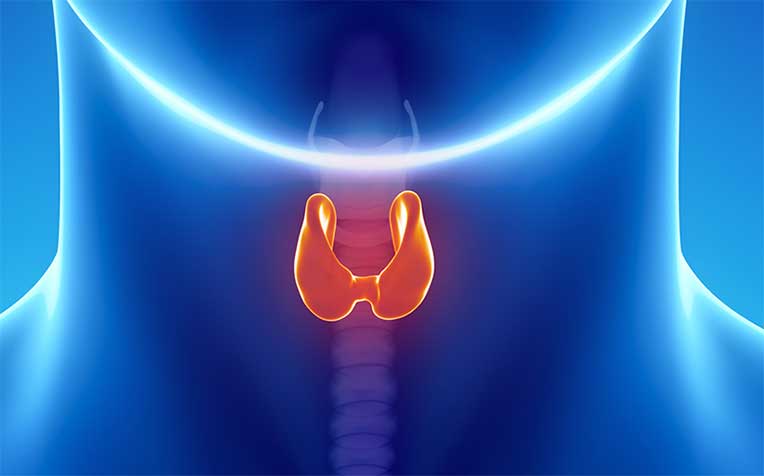
Tiny parathyroid glands in the neck help maintain the right balance of calcium and phosphate levels in the blood.
Surgery to remove overactive parathyroid glands in patients with kidney failure was often followed up immediately with a small bit of the gland being implanted into the arm muscle. This was done to restore the glands’ function, which could take nearly nine months to recover.
But a team of surgeons from the Singapore General Hospital (SGH) and the National Cancer Centre Singapore (NCCS), both members of the SingHealth group, recently found through a retrospective study of 132 patients that injecting a solution containing finely minced gland tissue into the upper arm got the parathyroid function up and running again more quickly. The glands’ function was restored in just two months, the study found.
“This new injection method promotes faster recovery and can be performed in nearly half the time that the conventional method requires,“ said Dr Jeremy Ng, Consultant, Department of General Surgery, SGH. Unlike the previous method of cutting up muscle to implant the gland, the injection does not leave any scars, and there is less risk of bleeding or infection.
“If the gland becomes overactive again, surgeons can get to the injection site more easily, without having to cut through muscle again,” said Dr Gopal Iyer, Senior Consultant, Department of Surgical Oncology, NCCS.
The study involved 132 patients who underwent surgery to remove their parathyroid glands between February 2005 and February 2012. The patients’ parathyroid function was restored by either implantation or injection.
The study was published in Surgery, a renowned international journal, in January 2014. The injection method, which carries a lower risk of complications, has become the standard procedure for this condition at SGH. About 130 patients have undergone the procedure.
Parathyroid glands are small but important
The tiny parathyroid glands that sit near the thyroid glands in the neck serve the very important function of maintaining the right balance of calcium and phosphate levels in the blood. When this balance goes out of whack, as is common among those suffering from poor kidney function, medication or even surgery is needed to treat the condition.
“Patients with poor kidney function have a problem with phosphate because all food has some phosphate in it,” said Associate Professor Lina Choong, Senior Consultant and Director of Dialysis, Department of Renal Medicine, SGH.
For people with kidneys that function normally, this excess phosphate is excreted through the urine, and balance is regained quickly. But when the kidney is not functioning normally, as with people suffering from end-stage renal failure, the signals cannot be heard and the kidneys cannot get rid of phosphate easily, leading to phosphate levels staying at elevated levels, she said. When this occurs for a long time, bone and cardiovascular diseases can occur.
Not everyone with kidney failure will develop overactive parathyroid glands; an estimated one-third of kidney failure patients develop the condition eventually. While the overactive glands can be controlled through medication and diet, about 5 per cent to 15 per cent of patients will need to turn to surgery as a last resort to address the problem.
What you should know about parathyroid glands
Sometimes too small to be detected even by ultrasound, parathyroid glands:
- Are small pea-sized glands, usually four, located just behind the butterfly-shaped thyroid glands in the neck
- Can grow 20-30 times their normal size when stimulated to keep producing a hormone that deals with phosphate and calcium imbalance
The glands’ balancing act
- Parathyroid hormone is released to control levels of calcium (too low) and phosphate (too high) in the body; magnesium too
- Causes kidneys to excrete excess phosphate in urine
- Causes release of calcium from bones, calcium to be absorbed, and stops kidneys from getting rid of calcium in urine
Calcium and phosphate are important in:
- Building and repairing bones and teeth
- Helping nerves to function
- Making muscles contract
- Helping blood to clot
When there is too much phosphate:
- Kidneys are not able to remove excess phosphate in urine effectively when prompted by hormone
- Parathyroid glands keep releasing hormone to try and lower high phosphate level
- Continued discharge of hormone causes side effects: more calcium is released from bones, resulting in slow loss of support function; released calcium clogs blood vessels
- Patients may experience bone and joint pains, fractures and/or cardiovascular problems
Implantation of injection?

Measuring kidney deterioration
Kidney disease usually worsens slowly over a period of years. There are five stages of kidney deterioration, each requiring different tests and treatments, said Associate Professor Choong at, SGH.
The stages are defined based on the glomerular filtration rate (GFR), the best measure of kidney function. The GFR is calculated using the results of a blood test along with the patient’s age, race and gender. The higher the GFR, the better the kidney’s function.

Ref: R14
Contributed by
















 Get it on Google Play
Get it on Google Play